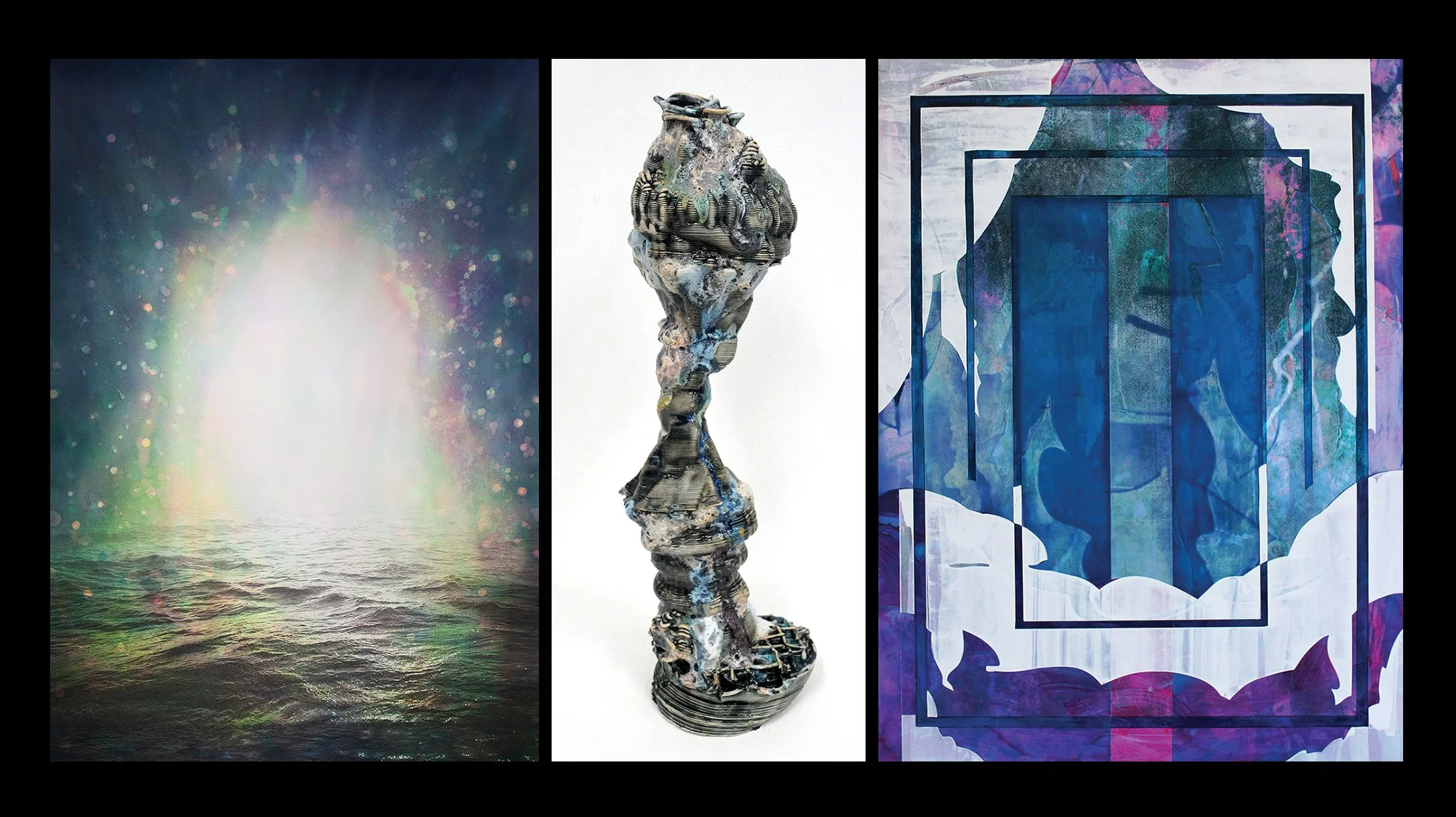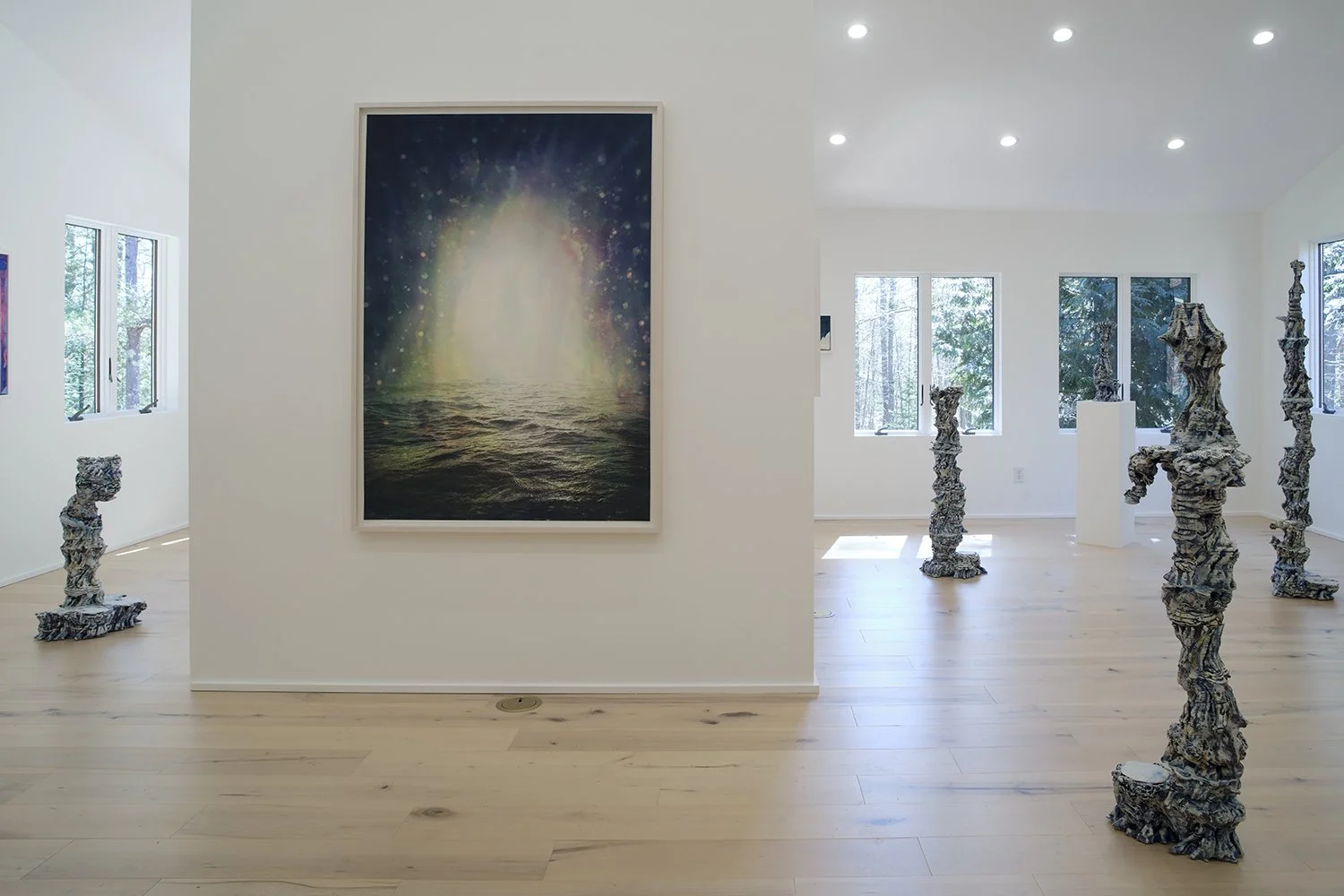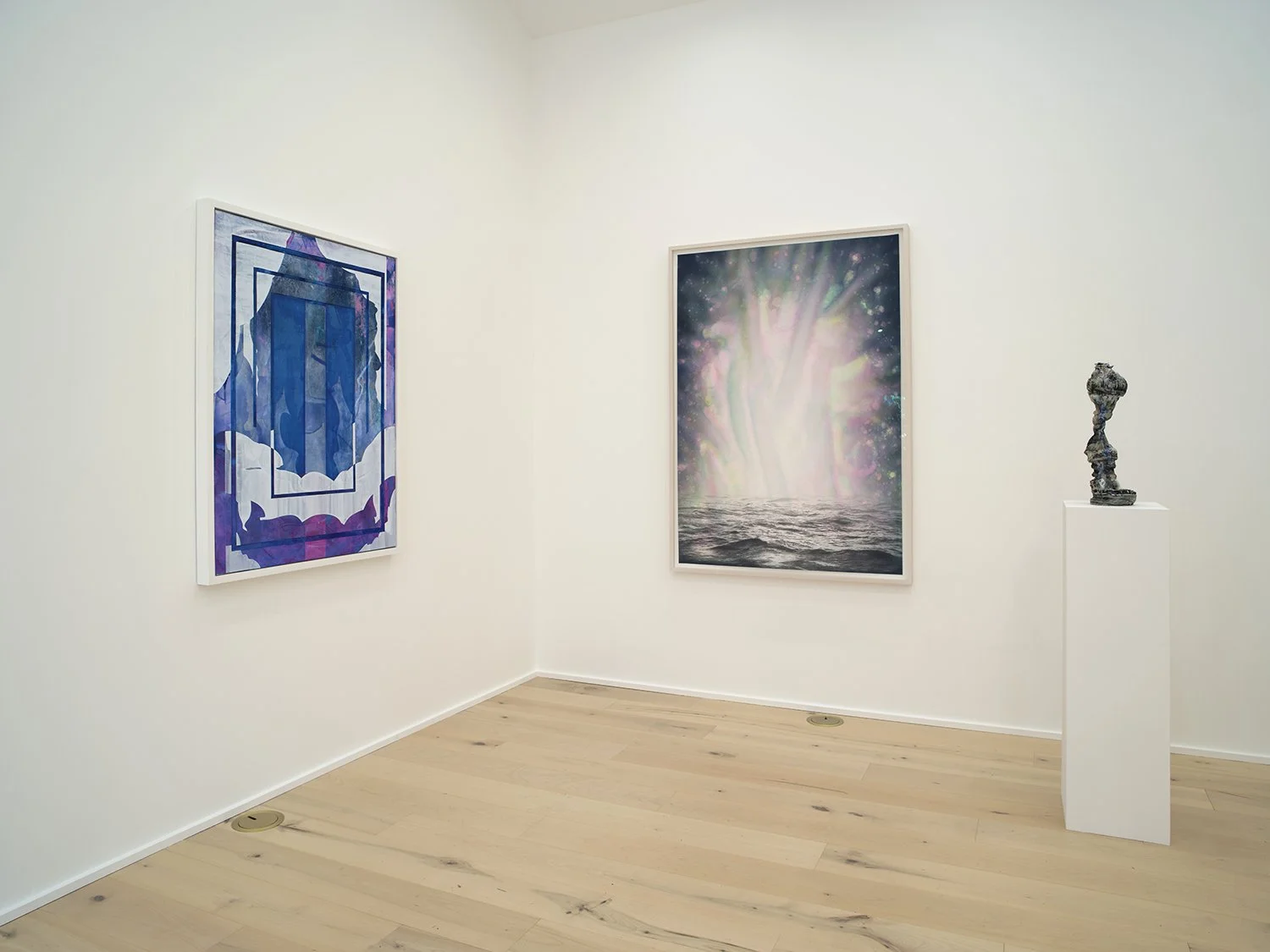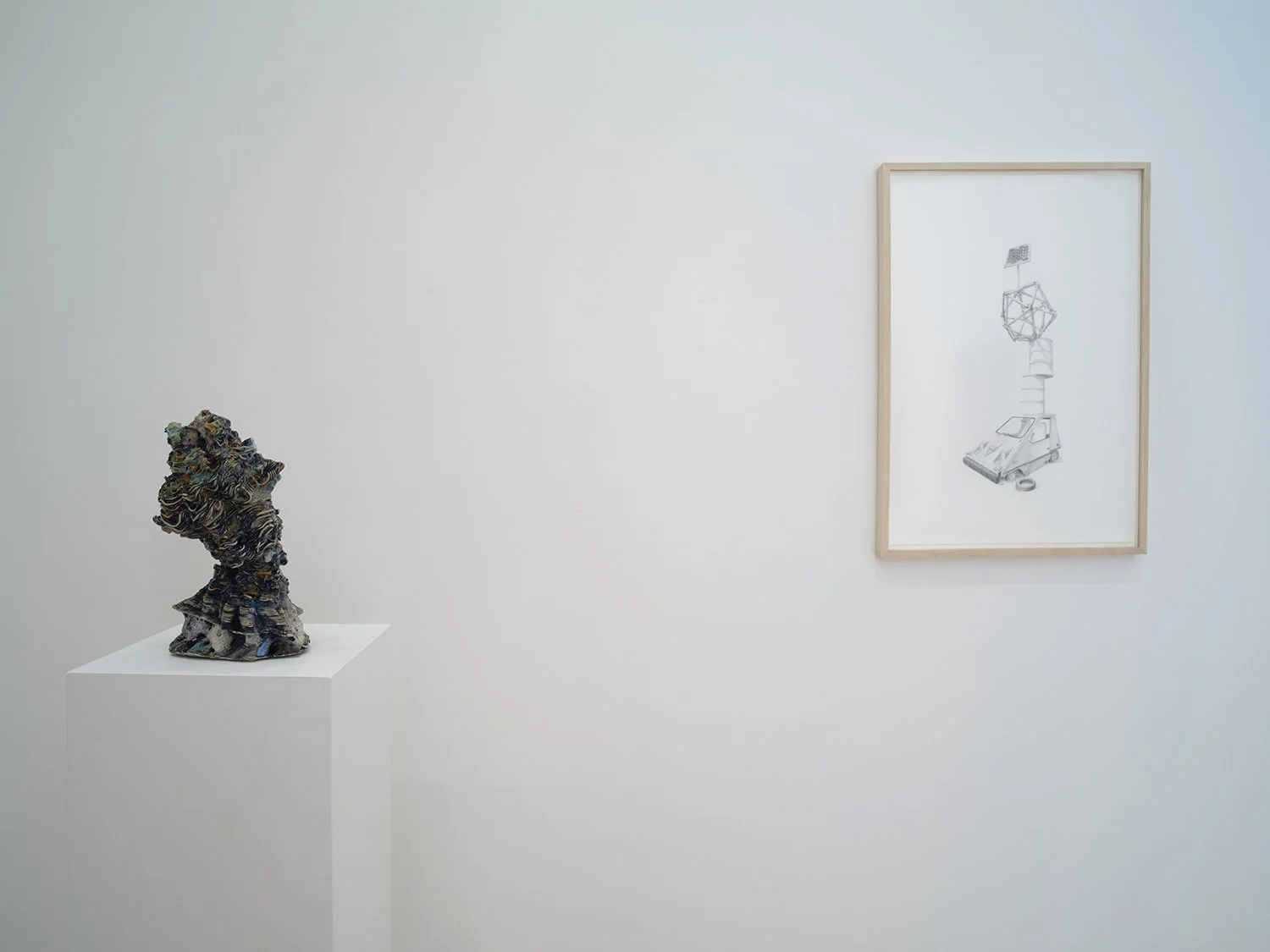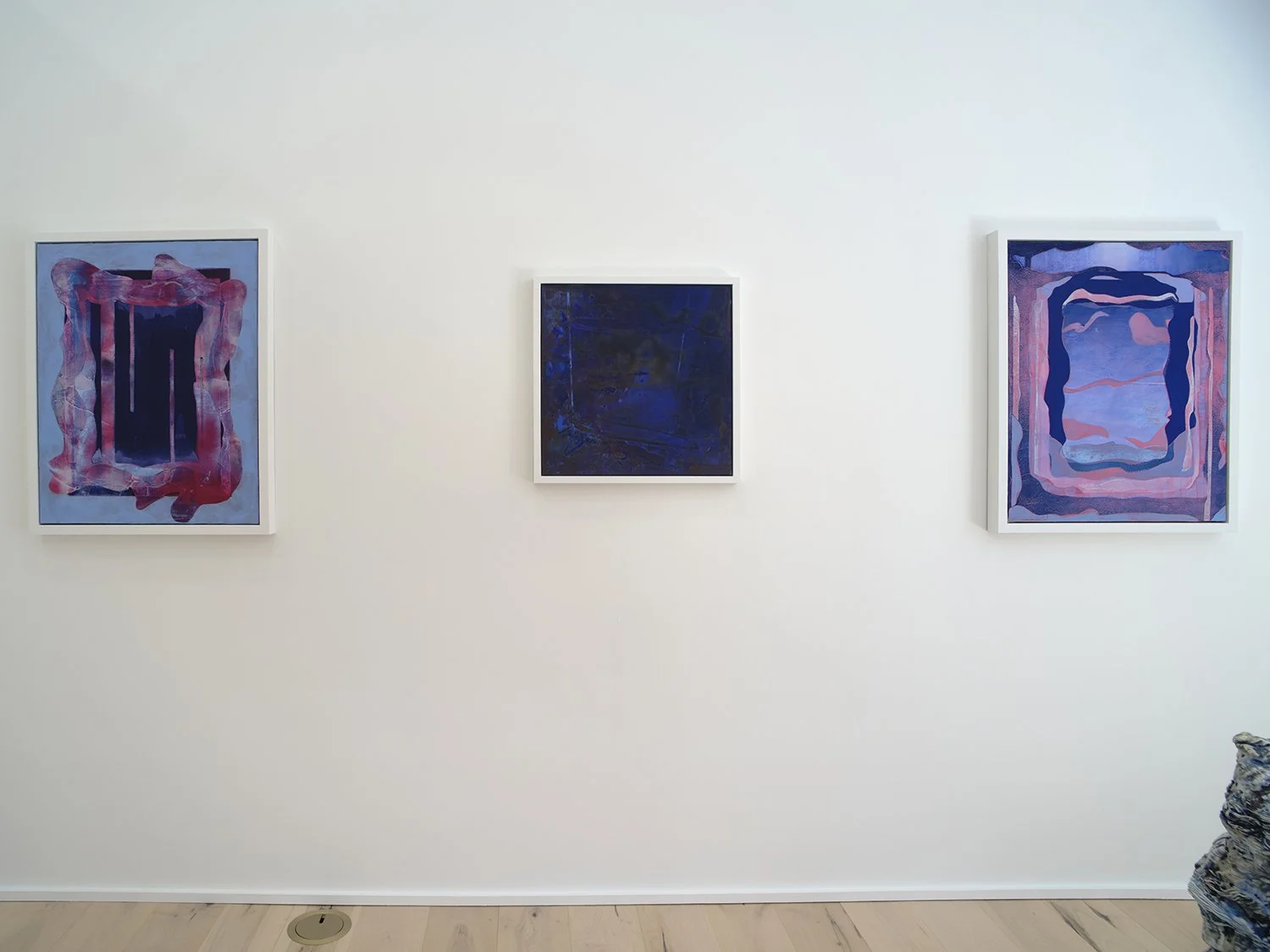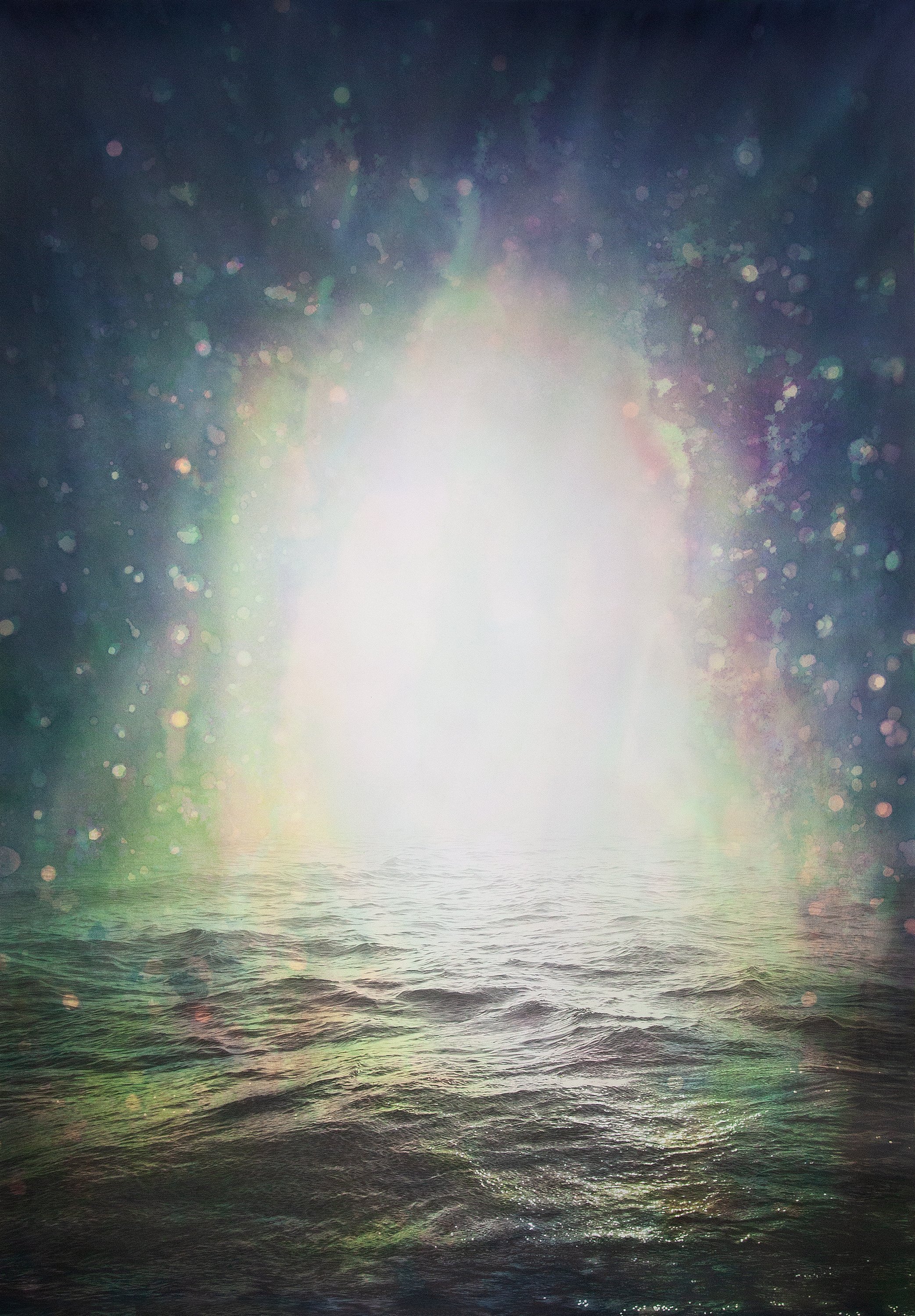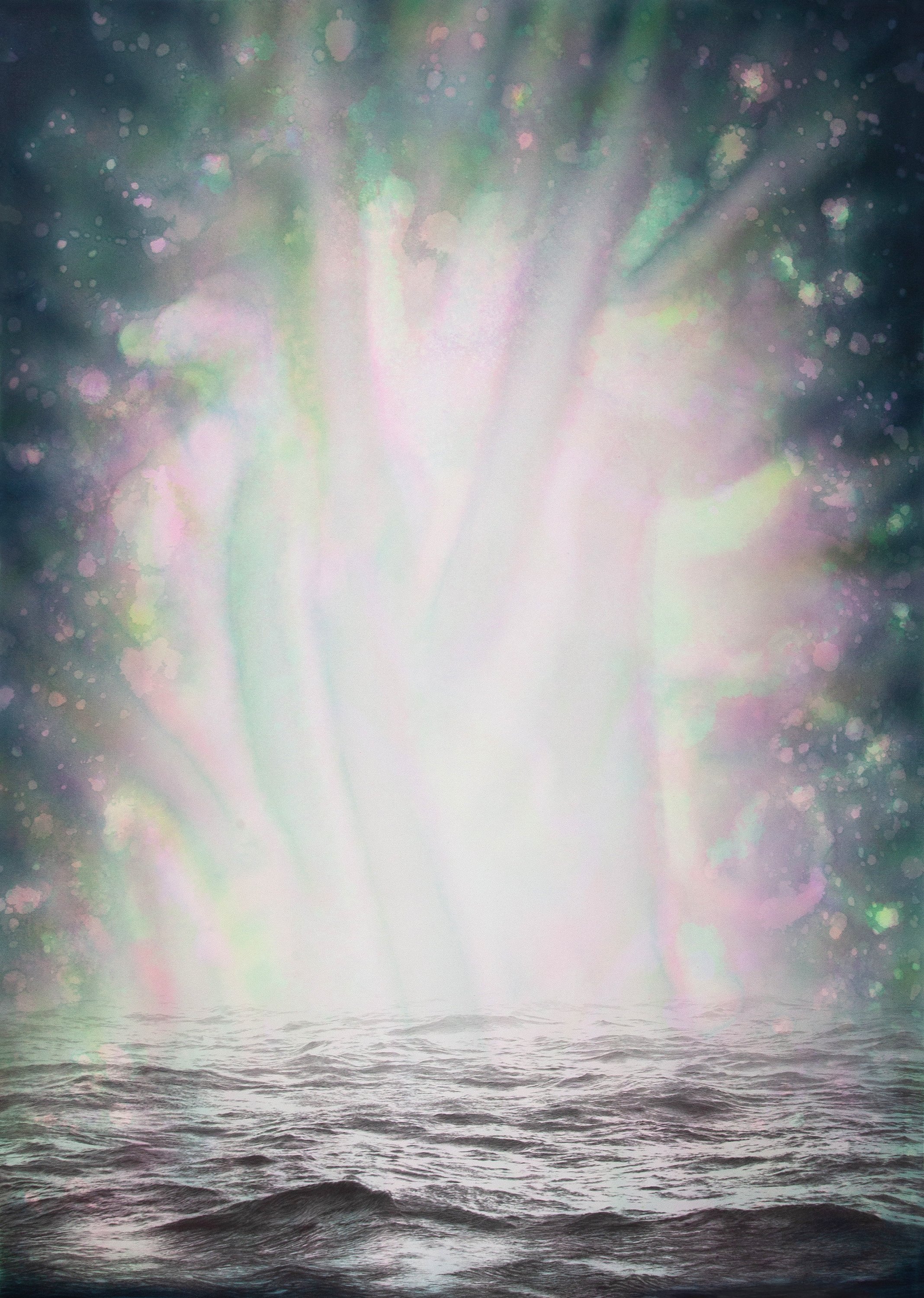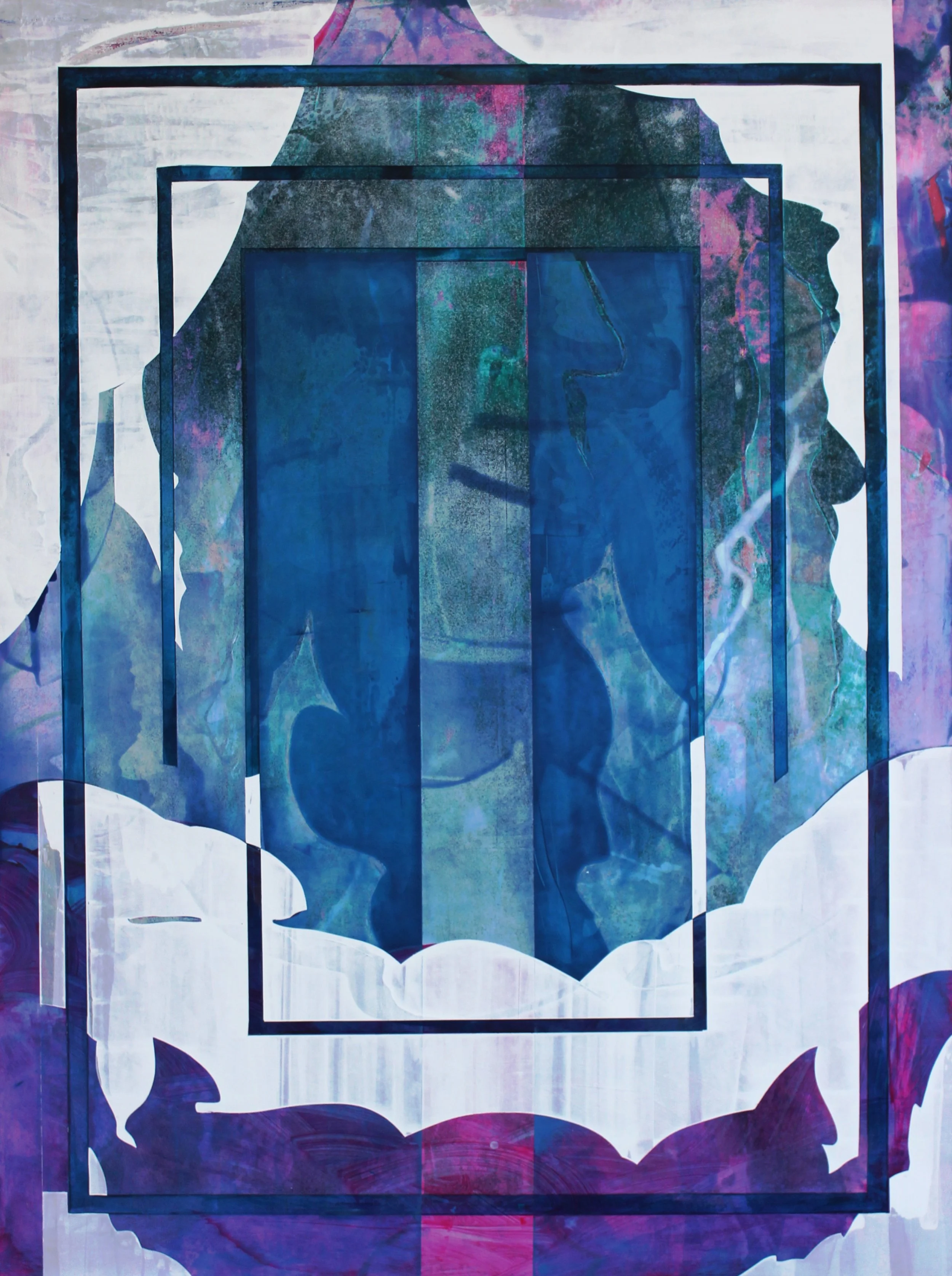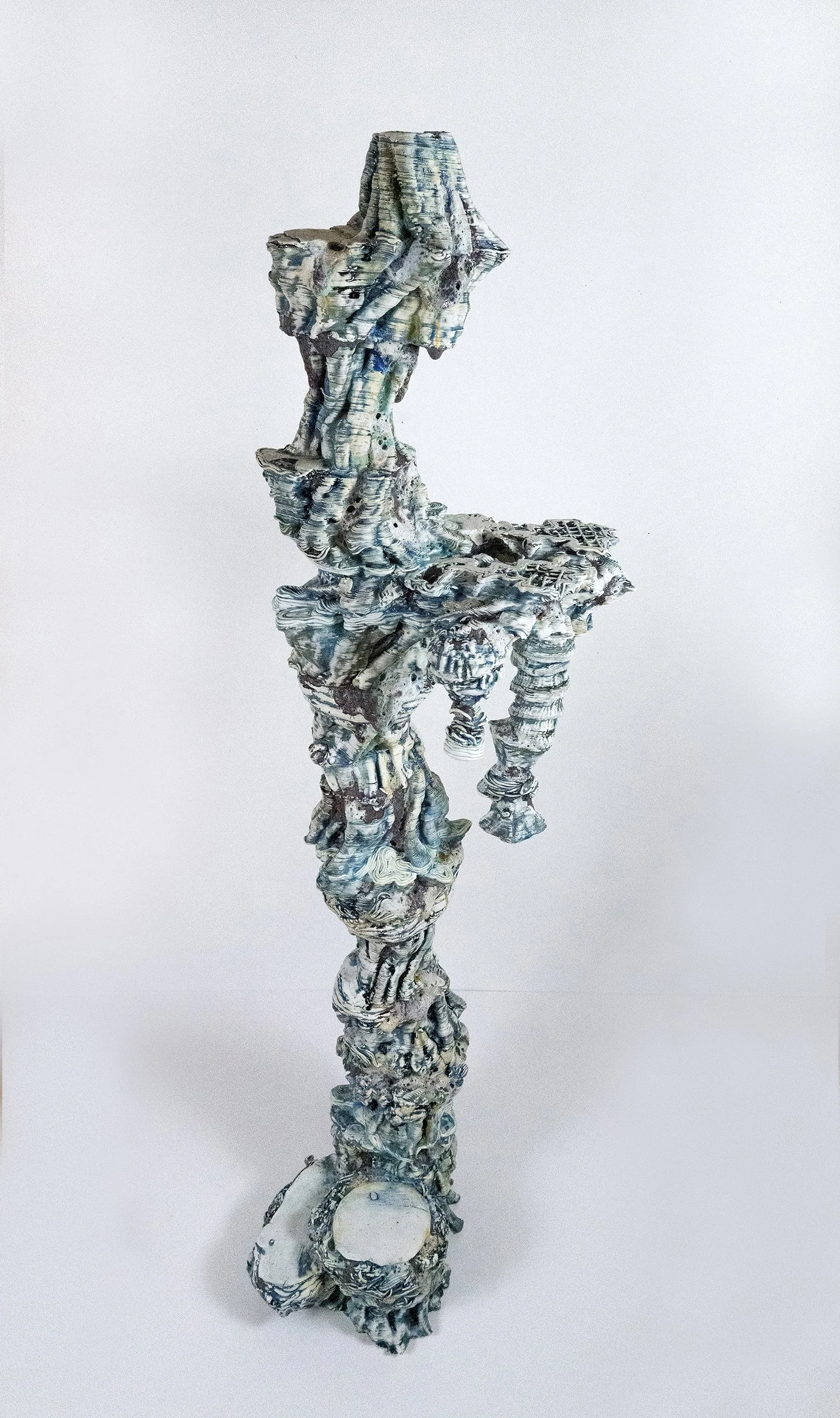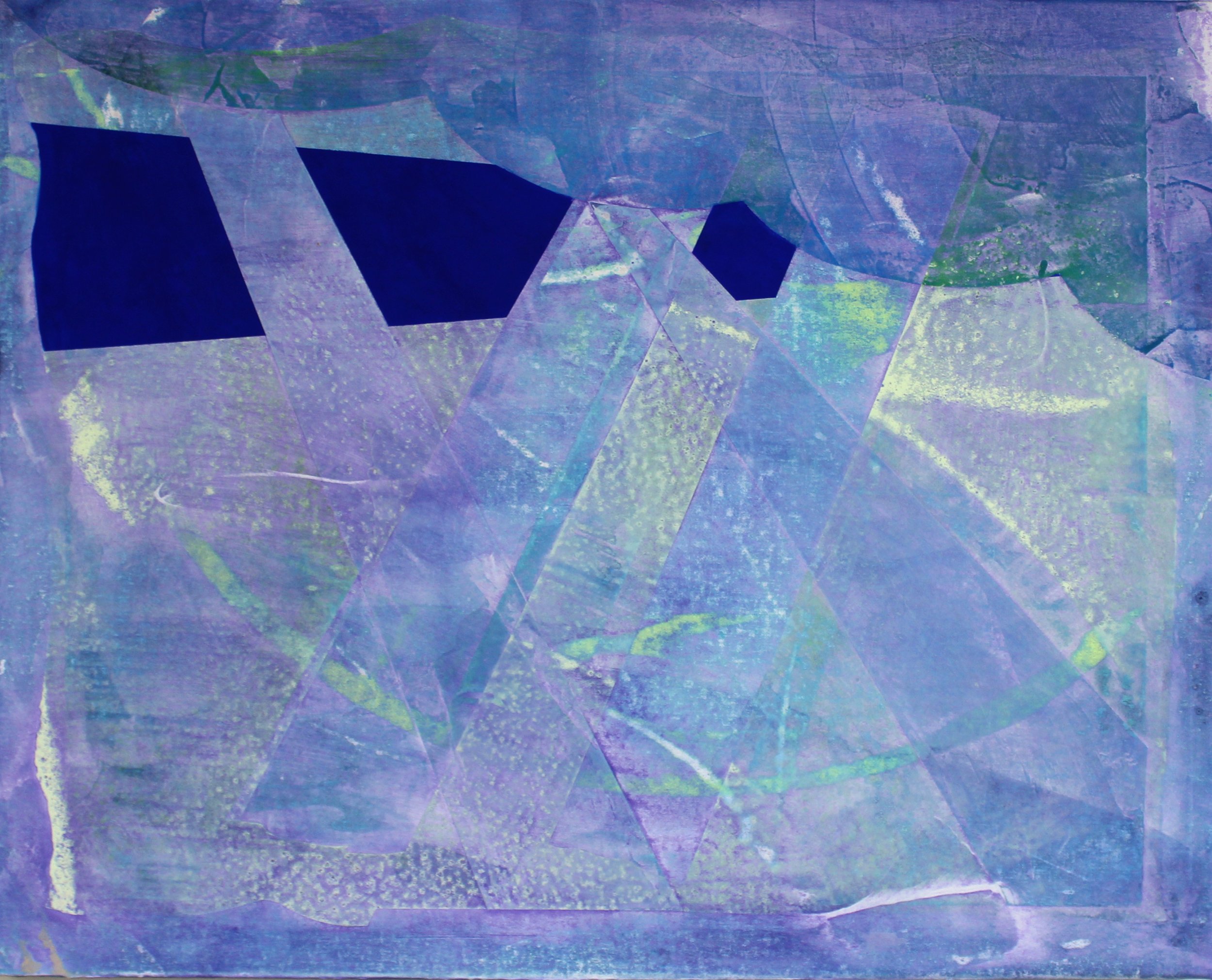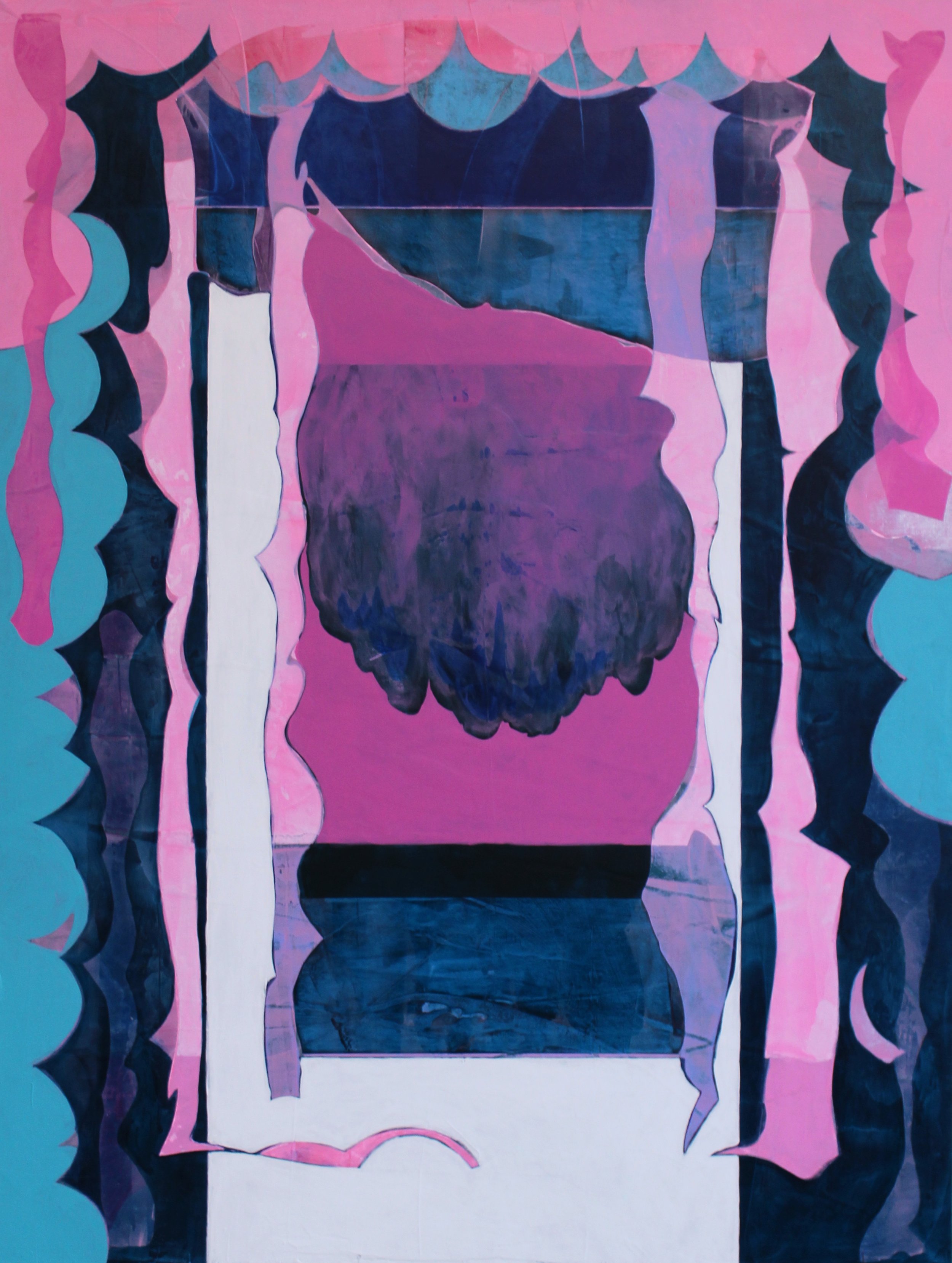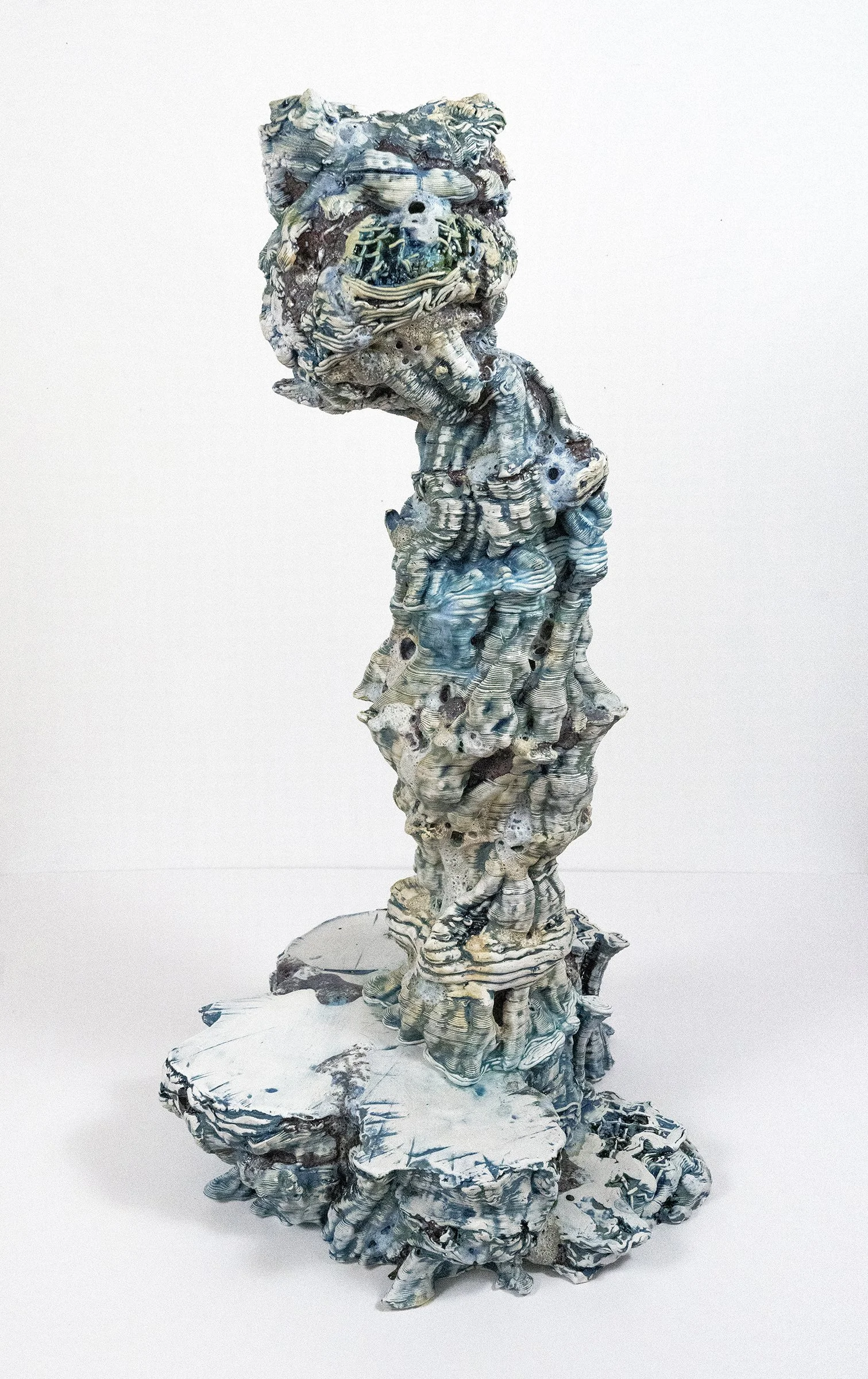LEFT: Joseph Smolinski. Open Water 26. 61” x 42”. Ink, acrylic and graphite on paper. 2024.
CENTER: Jackie Brown. Strata. 18” x 5.5” x 4”. 3D printed ceramic. 2023.
RIGHT: Lydia Kinney. Doily. 48” x 36”. Acrylic on canvas. 2024.
OPEN CALL 2024: This Ain’t No Fooling Around
JACKIE BROWN
LYDIA KINNEY
JOSEPH SMOLINSKI
April 6th - May 12th, 2024
The Sarah Bouchard Gallery in Woolwich, Maine is thrilled to host the inaugural OPEN CALL exhibition, This Ain’t No Fooling Around, featuring the work of three New England artists: Jackie Brown (Bath, ME), Lydia Kinney (Greenfield, MA) and Joseph Smolinski (New Haven, CT). The gallery’s first open call generated over 100 submissions from artists all over New England. Gallery director Sarah Bouchard conducted in-person studio visits with 13 of these artists, narrowing the pool down to the final three.
Taken together, the works included in This Ain’t No Fooling Around explore the intersection of technology, the environment and what it feels like to be alive RIGHT NOW, smack dab in the middle of our very own YA dystopian novel. Jackie Brown uses technology to mimic traditional methods of hand-building in clay, creating largescale sculptural works that are simultaneously apocalyptic and wildly free. Her surfaces and attention to detail are out of this world. Lydia Kinney attempts to find a future she cannot currently envision by coaxing spaces and forms out of paint, using abstraction to bridge the gap between a decidedly pessimistic present and the potential for some other reality. Her work involves a continuous process of painting, sanding, and refining to arrive at a visually stunning interpretation of what *could* be. Joseph Smolinski is a multi-media artist and master draftsman who combines intricate pencil drawings with free-form washes to interrogate the impact of technology on our environment. His work specifically focuses on communication networks, energy, and oil companies, and how these forces shape our planet.
EXHIBITION IMAGES
Install Image
Install Image
Install Image
Install Image
Install Image
Install Image
Install Image
Install Image
Install Image
Install Image
Install Image
Install Image
Install Image
Install Image
Install Image
Install Image
JOSEPH SMOLINSKI, Open Water 26
JACKIE BROWN, Strata
JOSEPH SMOLINSKI, Open Water 25
LYDIA KINNEY, Doily
JOSEPH SMOLINSKI, Open Water 17
JACKIE BROWN, Terraform Series III
JACKIE BROWN, Strata Series III
LYDIA KINNEY, Pulp
LYDIA KINNEY, Tide
LYDIA KINNEY, Bath
JOSEPH SMOLINSKI, Glimmer - Minor
JOSEPH SMOLINSKI, Sea and Frost - Minor
JOSEPH SMOLINSKI, Thank You, Regrets ...
LYDIA KINNEY, Nest
JACKIE BROWN, Terraform Series IV
LYDIA KINNEY, Lake
LYDIA KINNEY, 200,000 Meters Wide
LYDIA KINNEY, Worm
JACKIE BROWN, Terraform Series I
JOSEPH SMOLINSKI, Citicar Cairn
JACKIE BROWN, Strata Series II
LYDIA KINNEY, Amethyst
JACKIE BROWN, Terraform Series V
JACKIE BROWN, Terraform Series II
ARTIST STATEMENTS
JACKIE BROWN
At the heart of my work is a love of materiality and my current work stems from an interest in geological processes that span thousands of years. This was initially inspired by experimenting with a 3D clay printer and observing the way it extrudes material in layers that mimic the slow buildup of strata. I am also fascinated by how the 3D printing process alludes to the history of coil building in ceramics and I love the potential to use a traditional material like clay in new and expanded ways through emerging technology. The pliability of the raw clay allows me to embrace the anomalies and imperfections of the printing process and combine parts while the clay is still wet. I also fuse parts together during the firing process letting elements meld and morph in unexpected ways to generate experimental works that suggest shifting landscapes. At times the forms offer a sense of structure and order while at other times appearing looser and more chaotic, suggesting entropy and precarious states of being.
LYDIA KINNEY
In my process, the paintings are where the future would fit.
I do not feel a future in my body. I do not see what a future could look like with what I have around me. My imagination is stretched thin, and my most pragmatic habits fall short. Much of the work I find most resonant is work depicting the figure: work about the artist’s relationship to body, to space, to form. Particularly strong work exhibits these relationships with self.
Abstraction fills in the gap for both: the resonance of figuration as sensation and the pessimism of lived experience are one and the same when married in my work. Painting gives me a new visual language to illustrate the sensation of loss (future tense), alienation (physical), and doubt. I can invite a viewer to the sensation without inviting them to a representation. My paintings are still, always, an environment. Some works are rooms with little doorways and no floor. Other paintings are large confrontations of open space. Recently motifs of heavily draped paint hanging from gestural inverted landscapes dominate the work, an image of concealed place
I keep saying: I still want it to be destabilized. The most recent work is as unstable, environmentally, as I have ever known it to be. For all the worldly and introspective doubt that I bring into the studio practice, the paintings are their most liberated.
JOSEPH SMOLINSKI
My work over the past fifteen years has examined the roles of technology in our changing landscape. This questioning has led me to investigate communication networks, energy and oil companies, and the industrial agriculture infrastructure. I am interested in how these industries compose our construct of the “the natural environment” as well as physically shape our planet. My research-based work moves through media such as drawing, painting, sculpture and digital practices that often overlap and inform one another. I utilize historical methods of image making while simultaneously embracing new digital technologies and recognize this duality in environmental discourse that longs for the past and also strives for the future. My intent is to exercise both as a means to raise new queries about the nature of the environment.
ARTIST BIOS
JACKIE BROWN
Jackie Brown’s sculptures and installations blur boundaries between the real and the imagined. She exhibits work nationally, including exhibitions at the Center for Maine Contemporary Art, the Indianapolis Art Center, and The Delaware Contemporary. Brown is the recipient of several grants including a Maine Artist Fellowship and the Lighton International Artist Exchange Program Award. She has participated in numerous art residency programs including time at the Archie Bray Foundation in Montana, the European Ceramic Work Center in the Netherlands, and the Museum of Arts and Design in New York City. Brown received her MFA from Virginia Commonwealth University and her BA from Hamilton College. She currently lives in Bath, Maine and teaches in the Visual Arts at Bowdoin College.
LYDIA KINNEY
Lydia Kinney is a painter working in structured and layered abstraction. Based in Greenfield, Massachusetts, with her husband and cat, Lydia exhibits work throughout New England. Lydia is an honored BFA graduate of Massachusetts College of Art and Design.
JOSEPH SMOLINSKI
Joseph Smolinski is a multidisciplinary artist and educator who lives and works in New Haven, CT. His practice questions the shifting roles of technology within communication networks, energy and oil companies, and the industrial agricultural infrastructure, which indelibly shape the so-called natural environment. Smolinski received his BFA from the University of Wisconsin (1999) and his MFA from the University of Connecticut, Storrs (2001).
Group exhibition venues include Diverse Works, Houston, TX; MASS MoCA, North Adams, MA; Aldrich Museum of Contemporary Art, Ridgefield, CT; McDonough Museum of Art, Youngstown, OH; Wadsworth Atheneum Museum of Art, Hartford, CT. Solo exhibitions include Mixed Greens Gallery, NY; Swarm Gallery, Oakland, CA; Real Art Ways, Hartford, CT; and ArtSpace, New Haven, CT.
His work has been discussed in Art in America, The Boston Globe, The New York Times, and Art Papers. He is a recipient of the Connecticut Commission of the Arts 2012 Artist Fellowship, the 2014 Distinguished Visiting Scholar in the College of the Environment at Wesleyan University, and a 2012 Artist Resource Trust Grant from the Berkshire Taconic Community Foundation. He has been an artist in residence at Wassaic Projects, 2021 and the Happy and Bob Doran Connecticut AIR Program at Yale University Art Gallery and Artspace, New Haven.
